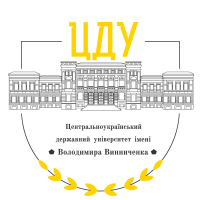ART THERAPY AS AN EFFECTIVE MEANS OF CORRECTING THE NEGATIVE CONSEQUENCES OF PTSD
DOI:
https://doi.org/10.32782/cusu-psy-2023-1-8Keywords:
art therapy, war stress, emotional trauma, PTSD, systemic approachAbstract
The article presents the results of the theoretical and analytical coverage of the problem of manifestations and consequences of PTSD of the individual as a result of military stress. Purpose: on the basis of the systemic approach, the psychological features of the polysystemic structure of the integrity of the individual are determined. Methods: applying the principle of systematicity to highlight the psychological nature of emotional trauma, PTSD, psychodiagnostic techniques: 1) Impact of Event Scale (IES), Mississippi Scale for Combat-Related PTSD; art therapy methods that contribute to the correction of negative manifestations of PTSD. Results: definitely the leading means of art therapy as an effective means of psychocorrection of the negative consequences of PTSD. An author's model of art therapy based on systemic and transtheoretical approaches, a biopsychosocial concept of states of psychosocial maladaptation, a psychological concept of personality as a system of human relationships with the environment, and a concept of creativity as a means of maintaining and regulating identity and a form of protectiveadaptive behavior has been developed. It was found that such a process involves different levels of biopsychosocial organization of the individual: biological, psychological, sociocultural. Conclusions. Therefore, the correction of the negative consequences of PTSD by means of art therapy intervention in the conditions of the psychotherapeutic process is possible due to: influencing the symptomatic level and solving tactical tasks: emotional stabilization and organization of behavior, increasing the client's motivation for psychological work and receiving psychological help, adaptation to environmental conditions; increasing the importance of personal reconstruction tasks related to personal reconstruction, associated with the correction of inadequate emotional, cognitive and behavioral stereotypes, the development of more adaptive behavior models.
References
American Psychiatric Association. Diagnostic and statistical manual of mental disorders (4th ed.). Washington, 1994. DC: Author.
American Psychological Association. Standarts for educational and psychological testing. Washington, 1986. DC: Author.
Breslau N., Davis G.C., Andreski P., Peterson E. Traumatic events and post-traumatic stress disorder in an urban population of young adults. Archives of General Psychiatry. 1991. 4, 9, 216–222.
Breslau N., Kessler R.C. Chilcoat H.D., Schultz L.R., Davis G.C., Andreski P. Trauma and posttraumatic stress disorder in the community. The 1996 Detroit area survey of trauma. Archives of General Psychiatry, 1998. 55, 626–632.
Effective treatments for PTSD. Practice Guidelines from the International Society for Tramatic Stress Studies. Ed. Be Edna B/Foa, Terence M. Keane, Matthew J. Friedmann. New York, London, 2000: The Guilford Press.
Kilpatrick D., Edmonds C.N., Seymour A.K. Rape in America: A report to the nation. Arlington, 1992. VA: National Victims Center.








